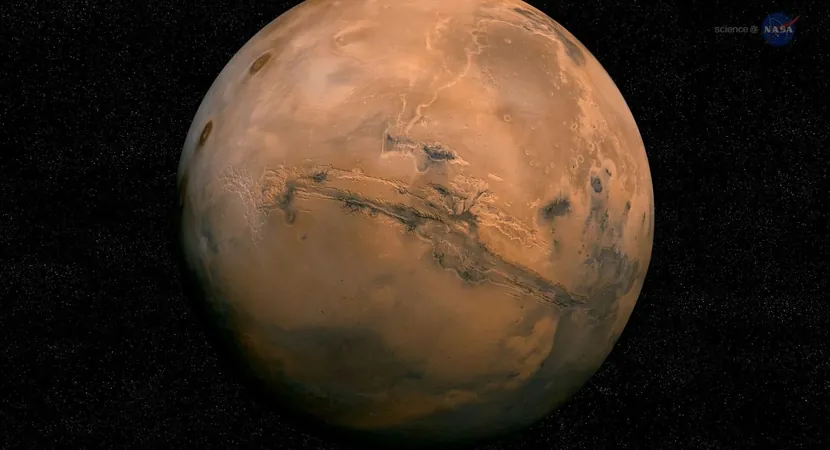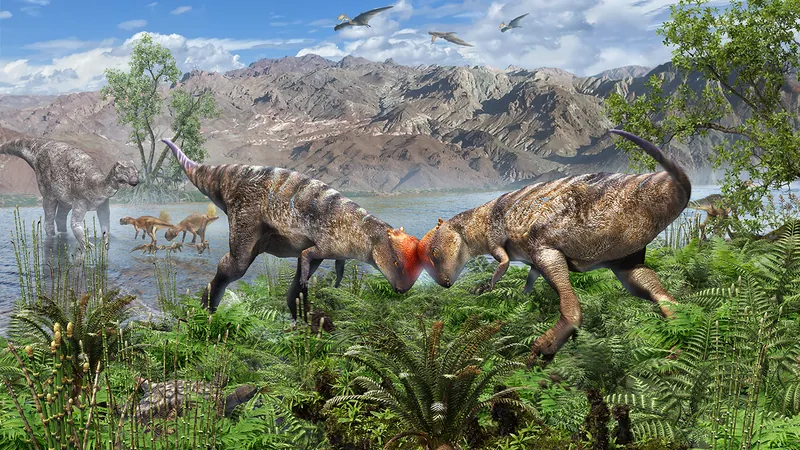
The Third Interstellar Visitor: Unveiling Secrets of Comet 3I/ATLAS!
2025-09-14
Author: Emily
Unraveling the Mystery of 3I/ATLAS
On July 1, a cosmic surprise emerged as the Asteroid Terrestrial-impact Last Alert System (ATLAS) detected a celestial object initially thought to be an asteroid. As astronomers analyzed its trajectory, they made an astonishing realization: this was not from our solar system but rather, the third interstellar object ever observed!
Dubbed 3I/ATLAS, this new visitor is stirring excitement in the astronomical community. Despite its dusty cloud—a coma hiding the actual nucleus—researchers have managed to gather fascinating insights.
Asteroid, Comet, or Aliens?
One of the first revelations about 3I/ATLAS was its origin from beyond our solar system, expelled from another stellar system during their planetary formations. Professor David Jewitt from UCLA emphasized, "It's traveling faster than the speed at which the sun's gravity can hold it—about 60 kilometers per second!" This makes it possibly the oldest object to grace our solar system.
Interestingly, early studies confirmed that 3I/ATLAS is a comet—composed of frozen gases, rock, and dust—rather than an asteroid. As it nears the sun, its frozen substances heat up, creating that iconic coma and tail.
Addressing conspiracy theories that it could be alien technology, Jewitt reassured, "It's behaving exactly like a comet, producing expected gases and features." Fellow researcher James Wray pointed out that while it resembles comets we've seen, there are peculiar differences in its properties.
A Comet Unlike Any Other
Intriguingly, the light polarization of 3I/ATLAS is distinct from typical comets. Wray noted, "The light doesn't scatter in different directions as it does with solar system comets." This may imply unique characteristics in its particles, including size, shape, or composition.
Furthermore, observations from the James Webb Space Telescope revealed an unusual abundance of carbon dioxide, along with carbon monoxide and water ice—a discovery that gives insight into its extraterrestrial chemistry.
A Cosmic Census: How Many Others Are Out There?
Since the first interstellar visitor, 1I/Oumuamua, was spotted in 2017, followed by Comet 2I/Borisov in 2019, astronomers are now calculating the potential for more interstellar traffic. Jewitt suggests that there could be about 10,000 interstellar visitors closer to the sun than Neptune at any moment, with 1,000 entering and leaving our solar system yearly!
With the new Vera C. Rubin Telescope in Chile scanning the sky every few days, the possibilities for discovering more visitors are rapidly increasing, allowing for earlier observations.
Hold on Tight: What's Next for 3I/ATLAS?
As 3I/ATLAS orbits the sun, it will briefly vanish from our sky, reappearing in December. It's expected to be observable for nearly a year, offering a tantalizing opportunity for further study—if it survives its solar peril.
Wray highlighted an exciting detail as 3I/ATLAS comes close to Mars: the Mars Reconnaissance Orbiter will capture images that are likely three times clearer than those from Hubble! This flyby will occur on October 3, making it a must-watch event for astronomers.
So keep your telescopes ready; the universe is full of surprises, and 3I/ATLAS is just one thrilling chapter in the cosmic story!









 Brasil (PT)
Brasil (PT)
 Canada (EN)
Canada (EN)
 Chile (ES)
Chile (ES)
 Česko (CS)
Česko (CS)
 대한민국 (KO)
대한민국 (KO)
 España (ES)
España (ES)
 France (FR)
France (FR)
 Hong Kong (EN)
Hong Kong (EN)
 Italia (IT)
Italia (IT)
 日本 (JA)
日本 (JA)
 Magyarország (HU)
Magyarország (HU)
 Norge (NO)
Norge (NO)
 Polska (PL)
Polska (PL)
 Schweiz (DE)
Schweiz (DE)
 Singapore (EN)
Singapore (EN)
 Sverige (SV)
Sverige (SV)
 Suomi (FI)
Suomi (FI)
 Türkiye (TR)
Türkiye (TR)
 الإمارات العربية المتحدة (AR)
الإمارات العربية المتحدة (AR)